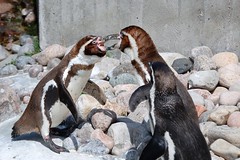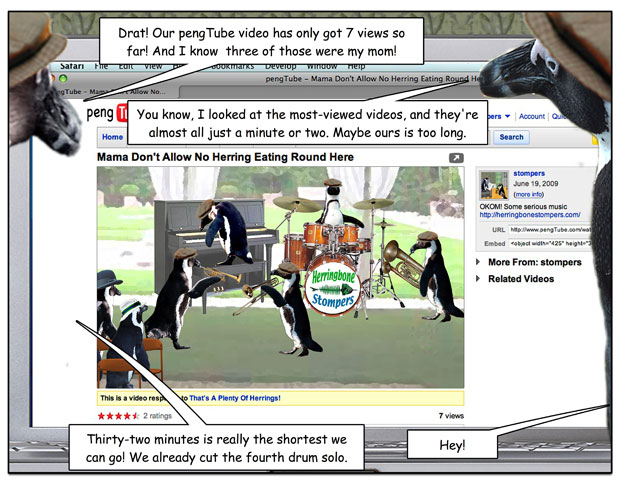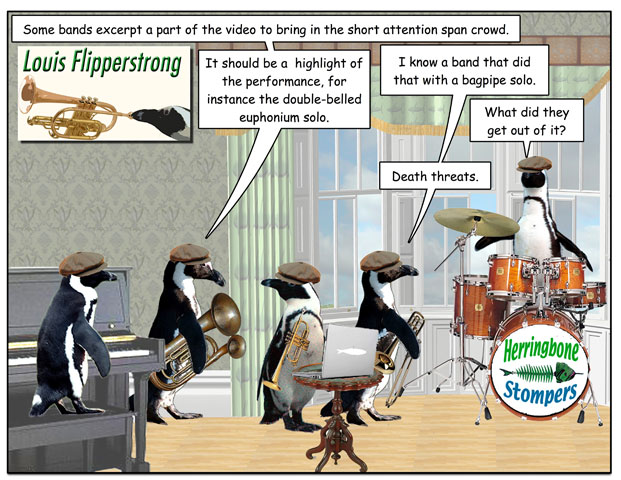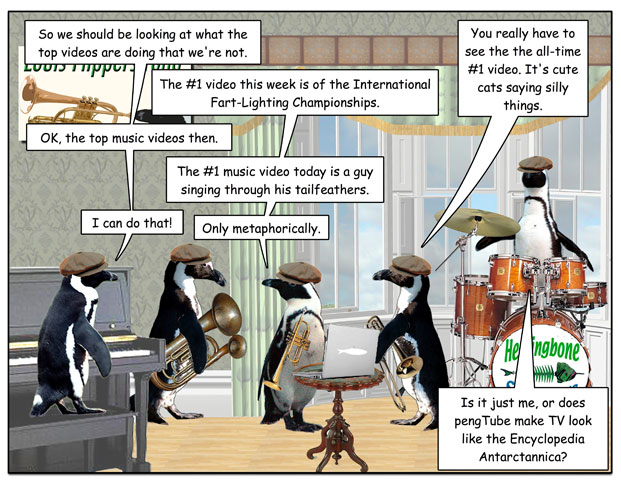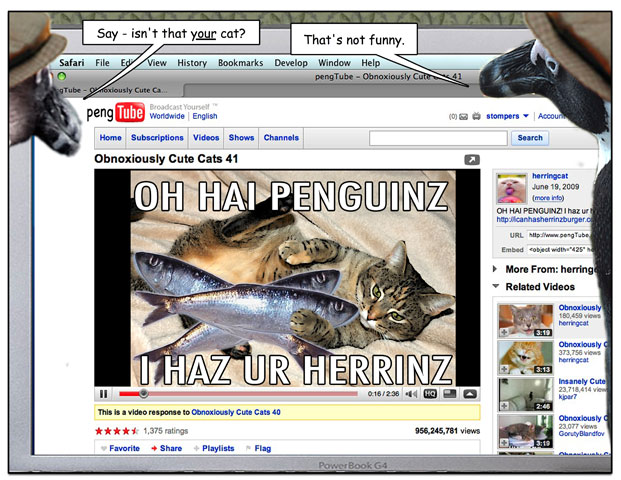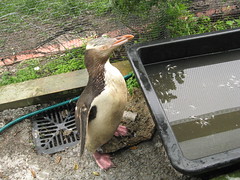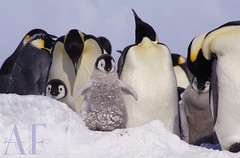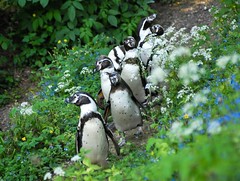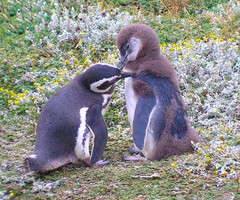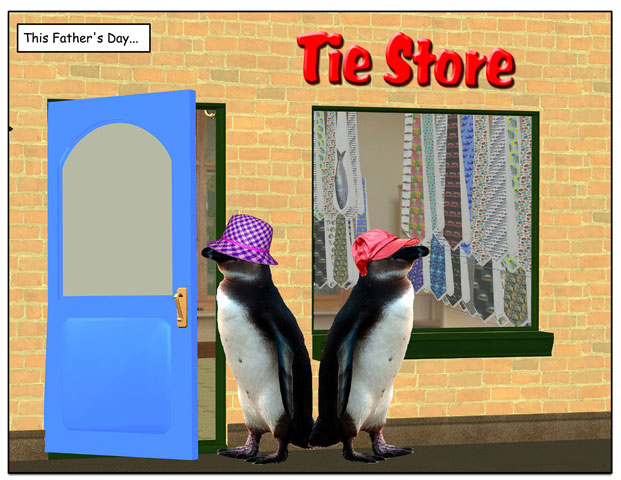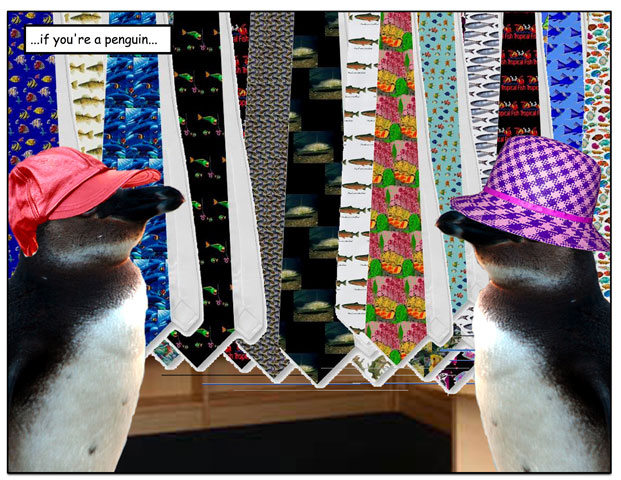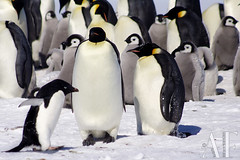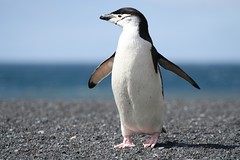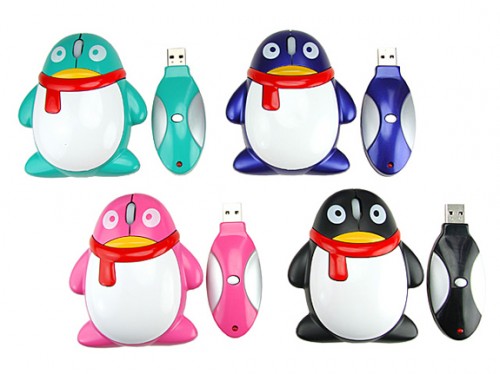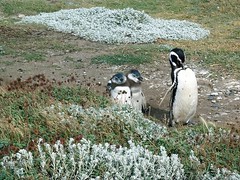
Aislenn Mehl, 15 months old, of Camillus, watches animal curator Ted Fox clean the glass inside the Humboldt Penquin exhibit at the Rosamond Gifford Zoo at Burnet Park, in Syracuse, while Cuzco the penguin takes a closer look.
Syracuse zoo's precocious penguins have fun with window cleanerby John Mariani / The Post-Standard
Wednesday June 17, 2009, 8:50 PM
Mike Greenlar / The Post Standard
Suspend a window washer on a scaffold 15 stories over South Salina Street and people hardly notice.
Dress the window washer in a scuba suit and send him into the pool of the Rosamond Gifford Zoo's Penguin Coast exhibit, on the other hand, and he'll draw a crowd -- both human and penguin.
That's what happened Wednesday, anyway, as Curator of Animals Ted Fox undertook the periodic chore of slipping into the penguin pool to scrub green algae from the exhibit's Plexiglas windows, the ones that let visitors watch the zoo's collection of Humboldt penguins play.
About 9:50 a.m., Fox pulled on a bright blue air tank, part of the gear that National Aquatic Service lends to the zoo for the undersurface cleanup, and gingerly lowered himself into the 60 degree water.
For a while, six or so nonplussed penguins swam a safe distance from where air bubbles streamed up from Fox's regulator. Soon, though, curiosity apparently overcame any shyness, and the penguins ventured closer.
Admission attendants, meanwhile, alerted early bird visitors that something special was going on at Penguin Coast, and kids and parents flocked to the exhibit.
"Cool! A sea diver!" a boy in an "I'd play deep if I were you" T-shirt crowed as he and some companions sped to the window where Fox was wiping off gunk with a specially made white abrasive sponge.
Playing deep apparently was on Cuzco's mind. The male Humboldt, who will celebrate his second hatch-day in August, swooped in on Fox, nipping at the back of his ankle, one of the few places on his body not covered by neoprene. Fox tapped Cuzco's beak with his finger and let Cuzco nip it, then went back to work.
"I'd be freaking out if I was him," said Eileen Vesosky, who watched with three of her children as Cuzco zeroed in on Fox from behind. "He doesn't even flinch."
Anything more than a playful nip can be painful, Fox said later.
"It's a combination of a pair of needle nose pliers and two box cutter blades," Fox said. "The tip of their beak has a really sharp point. The lower part has two additional points going upwards that fit together, and the sides of their upper beak is just like razors.
"They grab you and twist. You're going to bleed," he said. "All of the people who work with the penguins here have scars."
The algae isn't harmful -- it's allowed to build up on the artificial rocks that comprise the pool's bottom to give them a natural look. But it settles in scratches etched into the Plexiglas by passing penguins' beaks and, if left unattended, will cloud the view. Keepers can clean the windows using squeegees, but a more direct approach is needed to do deep cleaning.
So Fox, who dives for fun anyway, takes on the task, sharing it with another diver on staff, Collection Manager Nancy Porter.
It's not in his job description, but penguin window washing is a pleasant part of his duties, Fox said.
It's a great opportunity for kids to see zoo staff interact with the penguins underwater, he said. He's hoping some day to get an underwater sound setup that will let him converse with visitors as he cleans.
And it's a chance to interact with the penguins. The birds have learned that humans' reflexes are slower under water and take advantage of it, snatching his sponge to play ball and nipping his ears and pulling his hair.
"It's great enrichment for the penguins," he said. "They like to play with us.
**************************************************************************************
It's a boy!
The Humboldt penguin that hatched at the Rosamond Gifford Zoo on April 21 has been identified as a boy and has been named Pedro, zoo official announced this week. He is still being nurtured by his parents and is expected to be put on display in the Penguin Coast pool sometime this summer, zoo spokeswoman Lorrell Walter said.
Admission attendants, meanwhile, alerted early bird visitors that something special was going on at Penguin Coast, and kids and parents flocked to the exhibit.
Source: http://www.syracuse.com/news/index.ssf/2009/06/syracuse_zoos_precocious_pengu.html








